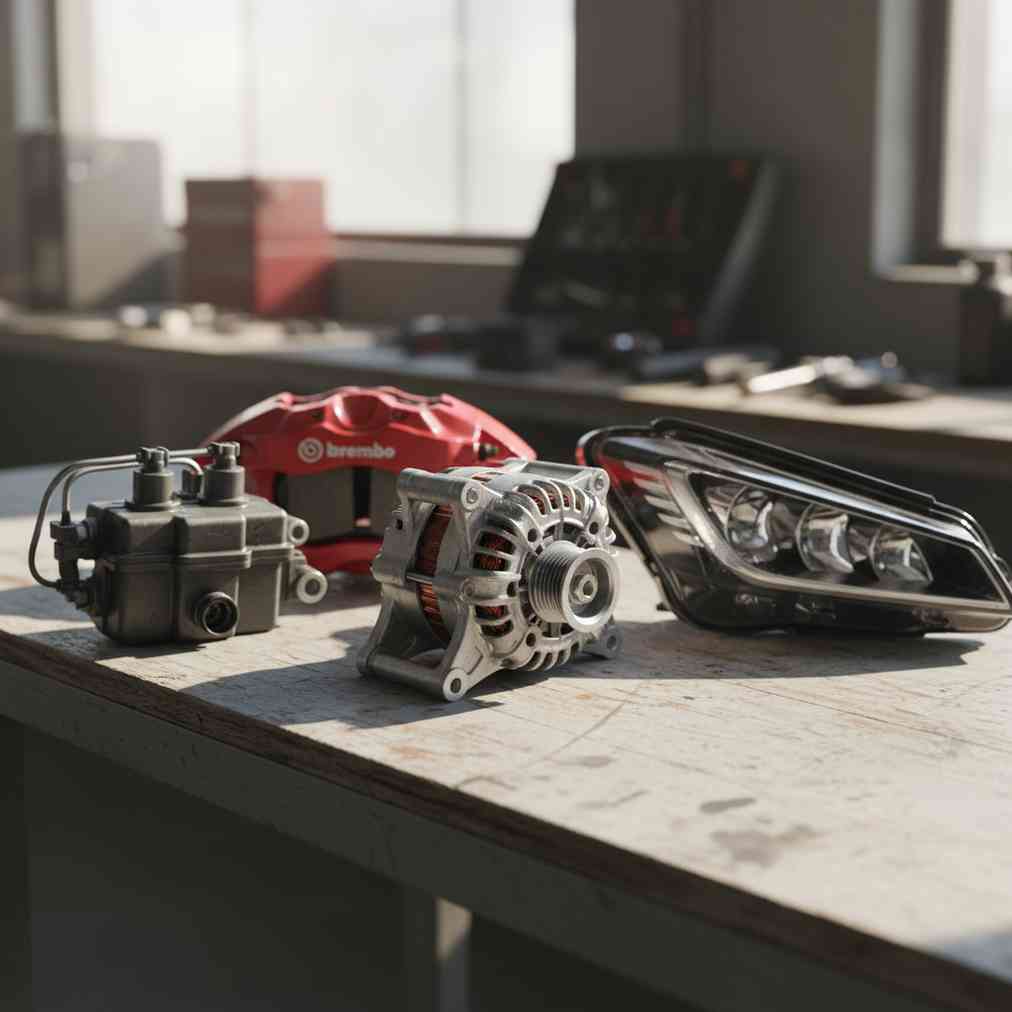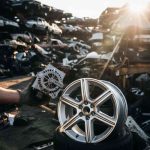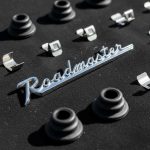Understanding the Basics of Car Stripping for Profit
Stripping a car for parts, also known as parting out a vehicle, can be an incredibly lucrative business when approached systematically. The key to maximizing profit lies in understanding market demand, prioritizing high-value components, and following proper safety protocols throughout the dismantling process.
Before diving into the dismantling process, it’s crucial to research your vehicle thoroughly. Check current market prices for parts on various platforms and understand which components from your specific make and model are in highest demand. This strategic approach can mean the difference between modest returns and substantial profits.
High-Value Components That Maximize Returns
Not all car parts are created equal when it comes to resale value. Focusing on the most sought-after components first will yield the quickest and largest returns, often covering your initial investment with just a few strategic sales.
Engine and Transmission Components
The engine and transmission are typically the crown jewels of any vehicle dismantling operation. A complete, running engine from popular brands like Toyota, Honda, BMW, or Mercedes-Benz can fetch anywhere from $1,200 to $5,000 or more, depending on the model and condition. Even if the engine isn’t running, it may still have value as a core for rebuilding purposes.
Transmissions, particularly manual transmissions from sports cars or automatic transmissions from popular trucks and SUVs, also command premium prices. Before removing these heavy components, ensure you have buyers lined up, as they require significant effort and proper equipment to extract safely.
Catalytic Converters: Precious Metal Goldmines
Catalytic converters contain precious metals including platinum, palladium, and rhodium, making them extremely valuable. Depending on the vehicle make and model, a single catalytic converter can be worth anywhere from $50 to over $500. Hybrid vehicles typically have the most valuable catalytic converters due to their higher precious metal content.
However, be aware of local regulations regarding catalytic converter sales, as many jurisdictions have implemented strict documentation requirements to combat theft. Always ensure you have proper proof of ownership and follow legitimate selling channels when dealing with these components.
Electronics and Control Modules
Modern vehicles are packed with expensive electronic components that retain significant value in the used parts market. Engine Control Units (ECUs), infotainment systems, navigation units, and various sensors can each be worth hundreds of dollars when functioning properly.
Body control modules, airbag control units, and anti-lock brake system (ABS) modules are particularly valuable because they’re expensive to replace new and often fail in older vehicles. Take extra care when removing these components to avoid damage from static electricity or improper handling.
| Component Type | Typical Value Range | Market Demand |
|---|---|---|
| Complete Engine | $1,200 – $5,000+ | Very High |
| Transmission | $500 – $3,000 | High |
| Catalytic Converter | $50 – $500+ | Very High |
| ECU/PCM | $200 – $800 | High |
| Alloy Wheels (Set) | $300 – $1,500 | Medium-High |
| Airbags | $200 – $600 each | Medium |
Essential Safety Protocols and Legal Compliance
Safety should always be your top priority when dismantling vehicles. Working with automotive components involves multiple hazards, from heavy parts to hazardous fluids, and proper precautions can prevent serious injuries and legal issues.
Personal Protective Equipment Requirements
- Safety glasses to protect against metal shards and fluid splashes
- Heavy-duty gloves resistant to cuts and chemical exposure
- Steel-toe boots to protect feet from heavy falling parts
- Respirator mask when dealing with dust, fumes, or old insulation
- Hard hat when working under suspended vehicle parts
Vehicle Preparation and Fluid Handling
Before beginning any dismantling work, properly secure the vehicle on level ground using jack stands – never rely solely on hydraulic jacks for support. Disconnect the battery immediately to prevent electrical hazards and potential airbag deployment during removal.
Drain all automotive fluids into appropriate containers before removing components. This includes engine oil, transmission fluid, coolant, brake fluid, power steering fluid, and any remaining gasoline. Most auto parts stores accept used oil and coolant for recycling, while other fluids may require special disposal through hazardous waste facilities.
Legal Considerations and Documentation
Ensure you have clear legal ownership of the vehicle before beginning dismantling. Keep all title documentation and be prepared to provide proof of ownership when selling high-value components like catalytic converters and airbags, which are commonly targeted by thieves.
Some states require special licensing for selling certain automotive components, particularly airbags, which must often be sold only to certified repair shops. Research your local regulations before beginning the dismantling process to avoid legal complications.
Step-by-Step Dismantling Process
Following a systematic approach to car stripping ensures maximum efficiency and helps prevent damage to valuable components. The order of removal is crucial for both safety and profitability.
Phase 1: Interior and Electronics Removal
Start with the vehicle’s interior components and electronics, as these are typically easier to remove and less likely to be damaged during the heavier dismantling work that follows. Remove seats, especially if they’re leather or from luxury vehicles, as these can command good prices.
Carefully extract the dashboard, infotainment system, and any aftermarket electronics. Modern dashboard components can be particularly valuable due to their complexity and high replacement costs when purchased new.
Phase 2: Body Panels and Glass
Remove exterior body panels while they’re still easily accessible. Doors, hoods, trunk lids, and fenders are commonly needed for accident repairs and can bring substantial returns if they’re in good condition. Take care to avoid scratches and dents during removal, as cosmetic condition significantly affects resale value.
Glass components, particularly windshields and rear windows in good condition, are also valuable. However, they require special handling and packaging for safe transport, which may limit your potential buyer pool to local customers.
Phase 3: Engine Bay Components
Before removing the engine, extract valuable ancillary components like the alternator, starter, power steering pump, and air conditioning compressor. These parts are relatively easy to remove and have steady market demand due to their frequent failure in aging vehicles.
The radiator, cooling fans, and air intake systems should also be removed before engine extraction. Clean these components thoroughly before listing them for sale, as appearance significantly impacts buyer interest and final selling price.
Maximizing Part Value Through Preparation
The difference between a profitable part sale and a mediocre one often comes down to presentation and preparation. Taking time to properly clean, test, and document parts can significantly increase their market value.
Cleaning and Cosmetic Restoration
Invest time in cleaning parts before photographing and listing them. A thorough cleaning can make a used part look nearly new and justify premium pricing. Use appropriate cleaners for different materials – degreaser for engine components, plastic cleaners for interior parts, and metal polish for aluminum wheels.
For valuable components like alloy wheels, consider basic cosmetic restoration such as touch-up paint or professional polishing. The additional time investment often pays off with significantly higher selling prices.
Testing and Documentation
Test electrical components before sale when possible. A simple multimeter can verify that alternators, starters, and electronic modules are functional, allowing you to price them as working units rather than cores. Document test results with photos or videos to provide buyer confidence.
Maintain detailed records of part numbers, compatibility information, and mileage when known. This information is crucial for buyers and can help you target your listing to the right audience, reducing time to sale.
Strategic Selling and Market Optimization
Where and how you sell your parts can dramatically impact your overall profitability. Different platforms serve different markets, and understanding these nuances helps maximize returns on different component types.
Online Marketplace Strategies
eBay Motors remains one of the most effective platforms for selling automotive parts, particularly rare or specialized components. The platform’s global reach helps you find buyers for unusual parts that might sit unsold in local markets. However, factor in eBay’s fees (typically 8-12% of final value) and shipping costs when pricing items.
Facebook Marketplace and Craigslist work well for larger, heavy items like engines and transmissions where local pickup is preferred. These platforms also allow you to avoid shipping costs and packaging challenges associated with large components.
Direct Sales to Repair Shops
Building relationships with independent repair shops can provide steady outlets for common failure items like alternators, starters, and brake components. While repair shops typically expect wholesale pricing, they offer the advantage of bulk purchases and consistent demand.
Specialty shops focusing on particular brands may pay premium prices for hard-to-find parts. BMW, Mercedes-Benz, and other luxury car specialists often struggle to find affordable replacement parts for their customers’ aging vehicles.
Profit Calculation and Financial Planning
Understanding the true profitability of car stripping requires careful calculation of all costs involved, not just the initial vehicle purchase price. Many newcomers underestimate the time investment and associated expenses, leading to disappointing returns.
Comprehensive Cost Analysis
Beyond the vehicle purchase price, consider these additional costs in your profit calculations:
- Transportation costs for vehicle pickup and delivery
- Tool purchases and equipment rental (engine hoists, etc.)
- Storage space rental if you don’t have adequate facilities
- Cleaning supplies and packaging materials
- Listing fees for online marketplaces
- Hazardous waste disposal fees for fluids and other materials
- Insurance for liability coverage during dismantling
Time Investment Considerations
Complete vehicle dismantling typically requires 20-40 hours of labor, depending on the vehicle’s complexity and your experience level. Factor in additional time for cleaning parts, creating listings, communicating with buyers, and handling transactions. When calculated on an hourly basis, ensure your projected profits justify the time investment.
“The most successful car strippers aim to recover their initial vehicle investment with just two high-value part sales. Everything else becomes profit, providing a comfortable margin for unexpected issues.”
Sample Profit Calculation
Here’s a realistic profit calculation for a mid-range sedan purchased for $1,500:
| Revenue Sources | Conservative Estimate | Optimistic Estimate |
|---|---|---|
| Engine (running) | $1,200 | $2,000 |
| Transmission | $600 | $1,000 |
| Catalytic Converter | $150 | $400 |
| Electronics/ECU | $300 | $600 |
| Body Panels | $400 | $800 |
| Wheels/Tires | $300 | $700 |
| Miscellaneous Parts | $250 | $500 |
| Scrap Metal Value | $150 | $200 |
| Total Revenue | $3,350 | $6,200 |
Subtracting the $1,500 vehicle cost and approximately $400 in additional expenses (tools, supplies, fees), the conservative net profit would be $1,450, while the optimistic scenario could yield $4,300 profit.
Current Market Trends and Opportunities
The automotive parts market continues evolving, with new opportunities emerging as vehicle technology advances and consumer preferences shift. Understanding these trends helps identify the most profitable vehicles to target for dismantling.
Electric Vehicle Component Markets
As electric vehicles become more common, specialized components like battery modules, charging controllers, and electric drive units are creating new profit opportunities. However, these components require specialized knowledge and safety precautions due to high-voltage systems.
Electric vehicle parts often command premium prices due to limited availability and high new-part costs. Tesla components, in particular, can be extremely valuable due to the company’s limited parts distribution network and high repair costs.
Supply Chain Impact on Used Parts Demand
Recent global supply chain disruptions have increased demand for quality used parts as new part availability has decreased and prices have risen. This trend has benefited the car stripping business, with many previously low-value parts now commanding higher prices.
Semiconductor shortages have particularly affected electronic components, making used ECUs, infotainment systems, and control modules more valuable than in previous years. This trend is expected to continue as automotive electronics become more complex and expensive.
Building a Sustainable Parts Business
For those looking to turn car stripping into a regular income source, developing systematic processes and building market relationships becomes crucial for long-term success.
Vehicle Acquisition Strategies
Successful parts businesses develop reliable sources for vehicles. Insurance auctions, estate sales, and relationships with towing companies can provide steady supplies of candidates for dismantling. Focus on popular models with high parts demand – Honda Accords, Toyota Camrys, and Ford F-150 trucks typically offer the best return potential.
Many experienced operators also work with local salvage yards near me to identify vehicles that might be better candidates for parting out rather than wholesale crushing. This can create win-win situations where you handle the labor-intensive dismantling while the yard provides the vehicles and disposal services.
Inventory Management and Storage
Proper storage becomes critical as your parts inventory grows. Organize parts by vehicle make and model, and maintain detailed inventory records to quickly locate items when buyers inquire. Weather protection is essential for maintaining part quality and maximizing selling prices.
Consider the carrying costs of inventory when deciding which parts to keep versus selling quickly at lower prices. Slow-moving parts tie up capital and storage space that could be used for more profitable inventory.
Final Disposal and Environmental Responsibility
After removing all valuable components, you’re left with the vehicle hull and various materials that require proper disposal. This final step often determines whether your project shows a profit or loss.
Scrap Metal Value Optimization
The remaining vehicle shell still has value as scrap metal, typically worth $100-300 depending on current metal prices and vehicle size. Separate different metals when possible – aluminum components often command higher prices than steel, while copper from wiring has premium value.
Monitor scrap metal price trends and time your disposal accordingly. Metal prices can fluctuate significantly, and waiting for favorable market conditions can improve your overall project profitability. Many scrap yards also offer pickup services for hulks, saving you transportation costs.
If you’re interested in selling a junk car quickly rather than dismantling it yourself, consider getting an instant quote to compare potential returns against the time and effort required for parts removal.
Environmental Compliance
Proper environmental compliance protects both your business and the environment. All automotive fluids must be disposed of according to local regulations, and many jurisdictions require documentation of proper disposal for business operations.
Consider the long-term reputation benefits of environmental responsibility. Customers increasingly prefer to do business with environmentally conscious sellers, and proper practices can become a competitive advantage in your marketing efforts.
Car stripping for profit combines mechanical knowledge, business acumen, and market awareness in a potentially lucrative venture. Success requires careful planning, systematic execution, and ongoing attention to market trends and safety requirements. While the work is physically demanding and time-intensive, the financial rewards can be substantial for those who approach it strategically and professionally.





Leave a Reply
You must be logged in to post a comment.